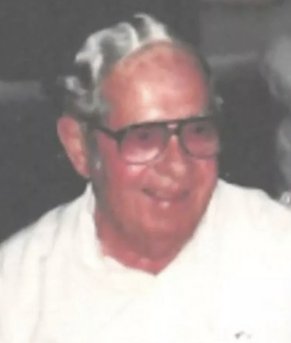
1972 - 2022
James Allen Coddington
Summary
Name:
James Allen CoddingtonYears Active:
1997Birth:
March 22, 1972Status:
ExecutedClass:
MurdererVictims:
1Method:
BludgeoningDeath:
August 25, 2022Nationality:
USA
1972 - 2022
James Allen Coddington
Summary: Murderer
Name:
James Allen CoddingtonStatus:
ExecutedVictims:
1Method:
BludgeoningNationality:
USABirth:
March 22, 1972Death:
August 25, 2022Years Active:
1997Date Convicted:
April 29, 2003bio
James Allen Coddington was born on March 22, 1972, in Oklahoma. He came from a large family with eight siblings. When Coddington was very young, his mother went to prison. She was away for almost the first eight years of his life. During this time, his father, who struggled with alcoholism, took care of him and his siblings.
Coddington's father reportedly abused him and often spent money on alcohol instead of food. This situation forced the family to live off scraps. At the age of seven, Coddington's father abandoned the family. After that, Coddington was placed in foster care. He began to have problems and became addicted to drugs at a young age.
Before the significant events of his life that would later define him, Coddington had multiple run-ins with the law. Between 1990 and 1991, he was convicted of burglary and unauthorized use of a motor vehicle.
murder story
On March 6, 1997, James Coddington, then 24 years old and battling drug addiction, approached his friend and coworker Albert Hale, age 73, in Oklahoma City. Seeking money to buy cocaine, Coddington asked Hale for a loan, which was refused. In response, Coddington brutally attacked Hale with a claw hammer, striking him repeatedly in the head and ultimately killing him. He then stole $525 from Hale’s wallet. The murder was discovered the next day, and Coddington was arrested on March 7, 1997.

Before he was tried for Hale’s murder, Coddington was convicted of six separate robberies committed around the same period and was sentenced on November 26, 1997, to six consecutive life terms. His murder trial took place six years later, beginning on April 24, 2003. On April 29, the jury found him guilty of first-degree murder, and on May 2, 2003, they recommended the death penalty.
However, in 2006, the Oklahoma Court of Criminal Appeals overturned the sentence, citing a constitutional error: the jury was not allowed to view a videotaped statement from Coddington’s mother that could have influenced their sentencing decision. A new sentencing trial was conducted in 2008, and despite this new context, a second jury again recommended the death penalty on June 16, 2008. On July 2, 2008, Coddington was re-sentenced to death, apologizing in court to the Hale family.
Coddington’s appeals were repeatedly denied. In 2020, the 10th Circuit Court rejected his petition, and in June 2021, the U.S. Supreme Court declined to intervene, rendering him eligible for execution. He also joined a lawsuit with 27 other Oklahoma death row inmates challenging the state’s execution protocol, which was dismissed in 2022.
On July 26, 2022, Coddington’s clemency hearing took place before the Oklahoma Pardon and Parole Board. His supporters—including defense attorneys and anti-death penalty advocates—presented evidence of his clean prison record, remorse, sobriety, and educational efforts (including earning his GED). The board narrowly voted 3–2 in favor of granting clemency, which would have commuted his sentence to life without parole. Nonetheless, on August 24, 2022, Governor Kevin Stitt denied the recommendation.
On August 25, 2022, James Allen Coddington was executed by lethal injection at the Oklahoma State Penitentiary in McAlester. He was 50 years old. His execution marked the resumption of Oklahoma's post-pandemic execution schedule, and his case remained one of the more debated capital punishment cases in the state due to his troubled past and efforts at rehabilitation while incarcerated.